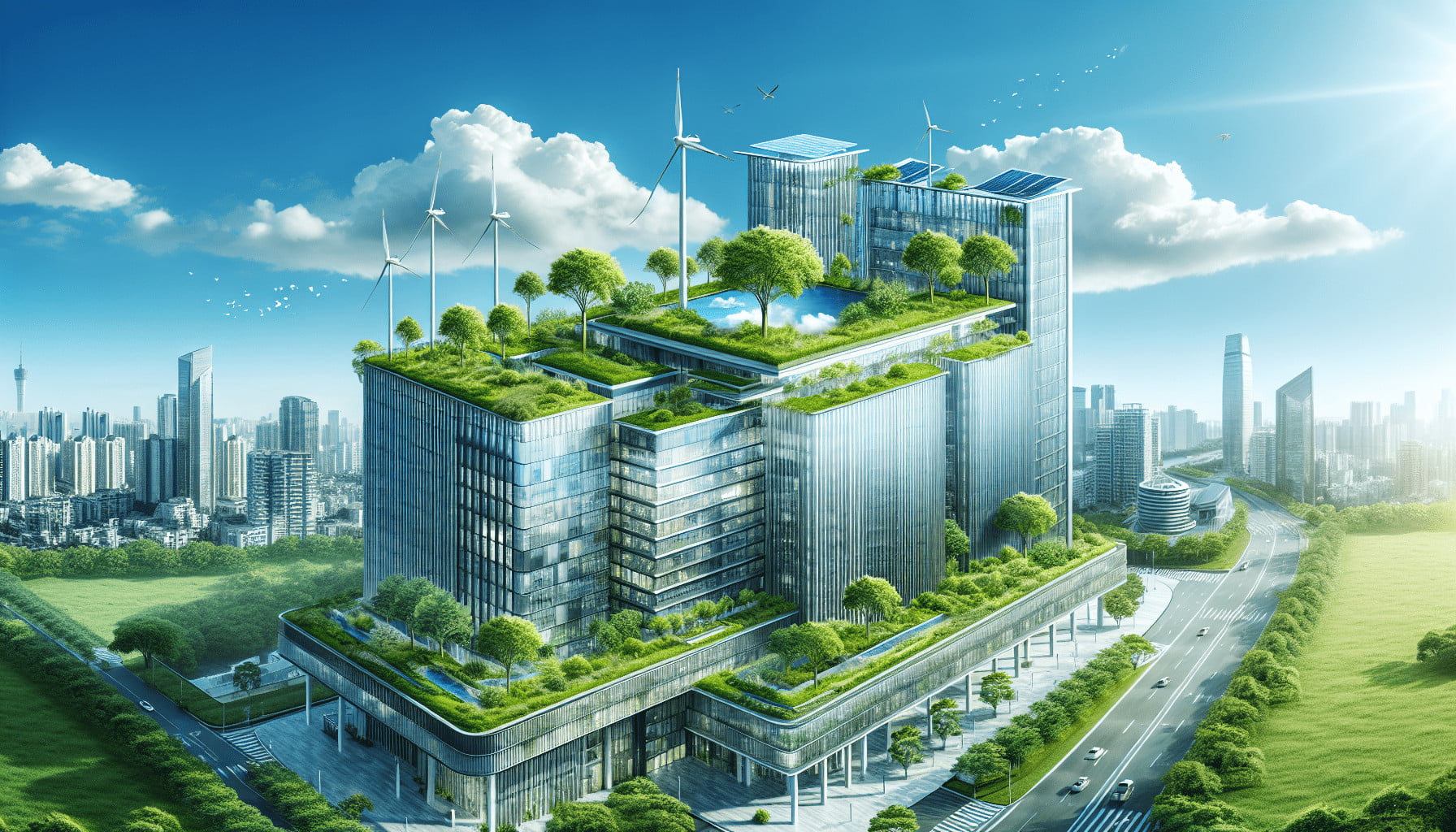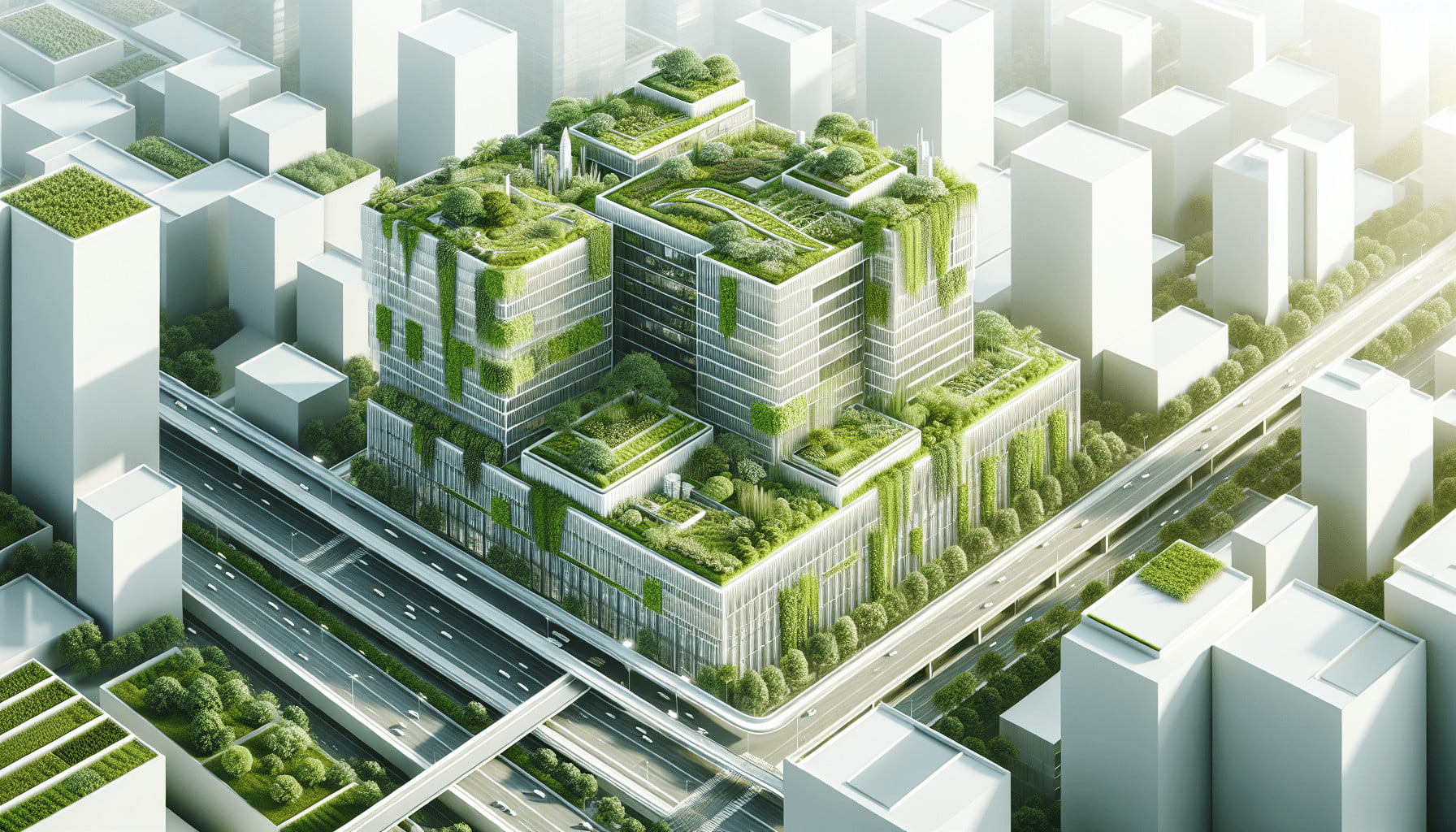Welcome to the “Ultimate Guide To Building Codes And Regulations For Green Roof Systems”! In this comprehensive guide, you’ll discover everything you need to know to ensure your green roof projects comply with local building codes and regulations. From understanding the environmental benefits to navigating through the maze of permits and safety standards, this guide will be your go-to resource. Whether you’re a professional architect, a committed environmentalist, or a homeowner looking to make a sustainable change, this guide is crafted to help you every step of the way. Have you ever wondered how green roof systems could transform your building while contributing positively to the environment? If you’re considering making this eco-friendly upgrade, understanding building codes and regulations is crucial. This guide will help you navigate these requirements smoothly, ensuring that your green roof system not only enhances your property but also complies with all legal standards.
Ultimate Guide To Building Codes And Regulations For Green Roof Systems

Understanding Green Roof Systems
Green roof systems, sometimes referred to as vegetated roof covers or eco-roofs, are layers of living vegetation installed on the roof of a building. They provide an array of environmental benefits like reducing stormwater runoff, enhancing air quality, and offering insulation which can lead to energy savings. Additionally, green roofs can prolong the lifespan of a roof by protecting it from extreme weather conditions and ultraviolet radiation.
Types of Green Roof Systems
There are mainly three types of green roof systems you can choose from:
- Intensive Green Roofs: Often called roof gardens, these require more depth of soil and can support a variety of plants, including trees and shrubs.
- Extensive Green Roofs: These are easier to install and maintain, usually featuring low-growing plants like grasses, moss, and succulents. They are lighter and need less soil.
- Semi-Intensive Green Roofs: A hybrid of the two, these provide more greenery than extensive roofs but are less demanding than intensive roofing systems.
Importance of Building Codes for Green Roofs
Building codes are essential for the safety, durability, and functionality of your green roof system. These codes ensure that your green roof is structurally sound, meets fire safety standards, and aligns with local environmental goals. Compliance with building regulations is not just a legal requirement—it also maximizes the benefits and longevity of your green roof system.
General Building Codes and Standards
International Building Code (IBC)
The International Building Code (IBC) is one of the most widely adopted building codes in the United States and many other countries. It covers a broad range of topics, including structural integrity, fire safety, energy efficiency, and sustainability.
Key Aspects:
- Structural Load: The IBC specifies maximum load capacities to ensure that the roof can support the additional weight of soil, plants, and water.
- Fire Resistance: The IBC sets guidelines to ensure that green roofs meet minimum fire resistance requirements.
- Waterproofing and Drainage: Proper waterproofing and drainage are critical to prevent water damage to the underlying structure.
Leadership in Energy and Environmental Design (LEED)
LEED certification provides a framework for healthy, efficient, and sustainable building practices. It offers specific guidelines for green roof systems to earn points toward certification.
Key Aspects:
- Sustainable Sites Credits: Points are awarded for reducing stormwater runoff and heat island effect.
- Energy and Atmosphere Credits: Green roofs contribute to better insulation, reducing energy consumption.
- Materials and Resources Credits: Use of recycled, renewable, and locally-sourced materials can earn additional points.
ANSI/SPRI RP-14 Wind Design Standard
The ANSI/SPRI RP-14 standard provides guidelines for wind design specific to green roof systems. It emphasizes the need for proper attachment methods to ensure that green roofs can withstand various wind speeds and conditions.
Key Aspects:
- Wind Uplift Resistance: Make sure the roof system can withstand the local wind speed and conditions.
- Edge and Corner Zones: Extra measures are usually required to secure these vulnerable areas.
Local Building Codes and Zoning Regulations
Local building codes and zoning regulations can vary significantly depending on where you are located. Always consult your local building authority to understand specific requirements for your area. Here are some general aspects you may need to consider:
Permits and Approvals
Before installing a green roof, you must obtain the necessary permits and approvals from your local building department. This typically involves submitting detailed plans, including structural calculations, waterproofing methods, and plant selection.
Structural Assessments
A structural engineer may need to assess your roof to ensure it can handle the added weight of a green roof system. Modifications to the existing structure might be required to meet these standards.
Fire Codes
Fire resistance is a key concern for green roofs, especially in areas prone to wildfires. Your local fire department may have additional requirements related to fire barriers, irrigation, and plant types to minimize fire risks.
Zoning Laws
Zoning laws can affect your green roof project by imposing restrictions on height, visibility, and even types of vegetation. It’s vital to review these regulations to ensure compliance.

Environmental and Sustainability Regulations
Stormwater Management
Green roofs play a significant role in managing stormwater runoff. Many municipalities offer incentives for green roofs as part of their stormwater management plans. These can include:
- Fee Reductions: Reduced stormwater management fees for properties with green roofs.
- Grants: Financial assistance for the installation and maintenance of green roof systems.
- Credits: Stormwater credits that can be traded or sold.
Energy Efficiency Standards
Green roofs contribute to energy efficiency by providing additional insulation. Some jurisdictions offer incentives for energy-efficient building practices, including green roofs. Compliance with energy efficiency standards like those set by the U.S. Department of Energy can also earn you tax credits and rebates.
Air Quality Regulations
Green roofs can improve local air quality by filtering pollutants and providing oxygen. Some regions have air quality regulations that encourage the use of green infrastructure, including green roofs.
Best Practices for Compliance
To ensure that your green roof system complies with all relevant codes and regulations, consider the following best practices:
Engage Professionals
Hire experienced professionals such as architects, structural engineers, and landscape designers who are well-versed in local building codes and regulations.
Detailed Planning and Documentation
Submit comprehensive plans and documents to your local building authority. Include details on structural calculations, waterproofing methods, plant selection, and maintenance schedules.
Regular Maintenance
Ongoing maintenance is crucial for the longevity and functionality of your green roof. Regular inspections and upkeep will ensure that your green roof continues to comply with building codes and regulations.
Case Studies
The Brooklyn Grange, New York City
One of the most famous examples is the Brooklyn Grange, a rooftop farm in New York City. This project highlights the significance of adhering to local building codes and regulations while maximizing the benefits of green roofs.
Key Takeaways:
- Thorough Preparation: Detailed planning and structural assessments were vital for compliance.
- Community Engagement: Collaboration with local authorities and community stakeholders ensured smooth approval and ongoing support.
- Environmental Impact: The project successfully reduced stormwater runoff, improved local air quality, and provided fresh produce to the community.
Vancouver Convention Centre, Canada
Another outstanding example is the green roof at the Vancouver Convention Centre, one of the largest in North America.
Key Takeaways:
- Integrated Design: The green roof was integrated into the building’s initial design, making compliance easier.
- Multifunctional Benefits: Besides aesthetic appeal, the green roof improved insulation, reduced energy costs, and supported local biodiversity.
- Regulatory Alignment: Adherence to both local and national building codes ensured long-term sustainability and functionality.
Frequently Asked Questions (FAQs)
Do I need a permit to install a green roof?
Yes, in most cases, you will need a permit from your local building authority. The requirements can vary depending on your location, so it’s important to check with your local building department.
How much does it cost to install a green roof?
The cost can vary widely depending on factors like the size of your roof, the type of green roof system you choose, and local labor rates. On average, you might expect to spend between $10 and $30 per square foot.
Are there financial incentives for installing a green roof?
Yes, many municipalities offer financial incentives such as grants, tax credits, and fee reductions to encourage the installation of green roofs.
How often do green roofs need maintenance?
The maintenance needs of a green roof can vary depending on the type of plants used and local climate conditions. Generally, you should plan for regular inspections and maintenance at least twice a year.
Can any building support a green roof?
Not necessarily. An existing building must be structurally assessed to determine if it can handle the added weight of a green roof system. Modifications may be required to meet structural requirements.
Conclusion
Incorporating a green roof system into your building can offer numerous environmental, economic, and aesthetic benefits. However, compliance with building codes and regulations is essential to ensure the safety, durability, and functionality of your green roof. By understanding the relevant codes, engaging professionals, and following best practices, you can successfully navigate the regulatory landscape and enjoy the many benefits that green roofs have to offer. Happy greening!
